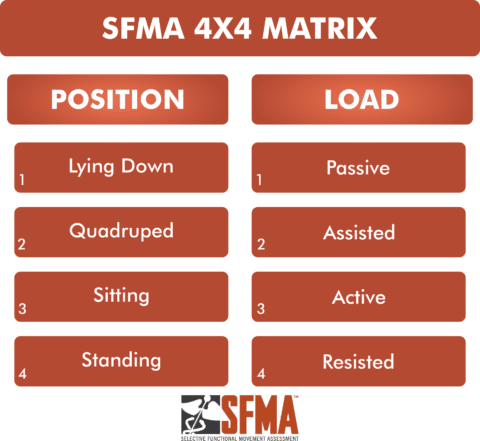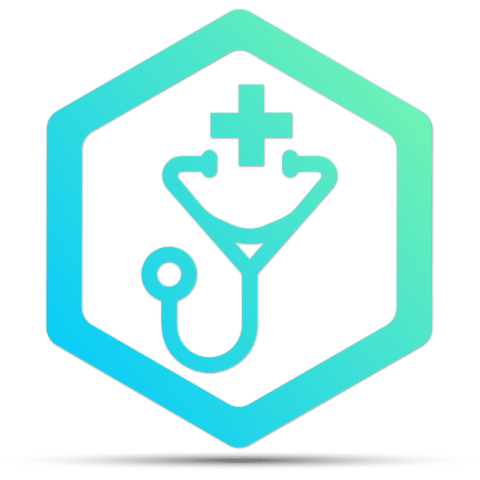One of the best ways to get better outcomes with your clients is to learn and integrate the 4×4 Treatment Matrix to any modality, not just IASTM. However, before we go into detail on how it can be applied to IASTM (Instrument Assisted Soft Tissue Mobilisation), and give you some specific examples it can achieve, we need to understand it’s origins and why some many medical and fitness professionals love it.
Origins Of The 4×4 Matrix
The 4×4 matrix originated from the creators of the Selective Functional Movement Assessment (SFMA). It was developed for the professionals that want progressive, efficient and effective corrective exercise and rehabilitation programmes. It’s elegance lies in a process that is simple to follow but covers several complex but important principles.
Developmental Positions
The client positions follow, in order, the developmental positions that each of us should work through after we are born. In each position we should learn motor neurone connections that helped us achieve fundamental movement patterns. If we want to break down a dysfunctional movement to it’s most basic position lets get the client down on the floor, back to where they started their movement development. If this is easy, move onto quadruped, kneeling and standing positions. Each of which are a further, more complex, position for the body create the correct movement pattern.
System Load
It’s no coincidence that each sequential developmental position also creates an increase in mechanical and neurological load on the body. As we learned to move with ease in each development position we then increased the physical and neurological stress by simply starting the exercise with our body into the next position; Lying Down to Quadruped. Quadruped to Kneeling and Kneeling to Standing.
Assisted/Resisted Movement
The issue with rehabilitation and exercise programmes that are the same for every client is that not all clients can perform exercises and move equally, even if they have the exact same diagnosis. Giving clients exercises that they can not perform correctly or safely will at best lead to a lack of progress or worse still lead to further aggravation or injury. The original 4×4 Matrix for the SFMA creates a system of assisted to resisted exercise, for any given movement dysfunction. A client can be assessed, progressed or regressed on that exercise depending on how they perform it. This ultimately leads to a safer, faster achievement of your goals for them.
Interprofessional Communication
Most medical, fitness and coaching professionals have their own favourite selection of exercises for any given movement dysfunction or rehabilitation goal. This usually creates the unfortunate need for long explanations when referring your client onwards to the other professionals. Repeatedly having to go through the process of explaining each subtle variation of exercises you’ve prescribed and their goal, for each client, is laborious. However, the 4×4 matrix solves that problem. Any medical, fitness or coaching professional who understands the matrix can simply refer their clients with a minimal, but effective, amount of communication. A simple reference to the dysfunctional movement pattern and their progress on the matrix, such as “2×1”, “3×3” or “4×2” is all that’s needed. The medical, fitness or coaching professional receiving your client will know there progress, the desired goal and will be able to quickly implement further exercises to continue the desired progress.
IASTM & The 4×4 Treatment Matrix
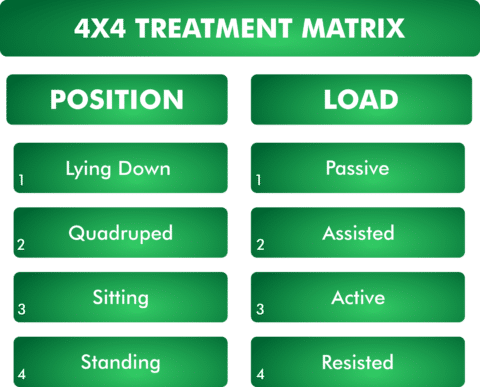
The 4×4 matrix can just as easily be converted and used as part of a treatment strategy. Shifting it’s focus from a stability and corrective exercise paradigm to one for physical therapy. When combining IASTM and the 4×4 treatment matrix the goal is to correct mobility dysfunction and treatment of pain or injury. The original SFMA 4×4 stability matrix and the new 4×4 treatment matrix allows for significant overlap. Often the client will show synchronised correction of both mobility and stability dysfunctions. This also allows for more fluent communication between you and other medical, fitness or coaching professionals that know the SFMAs original 4×4 matrix.
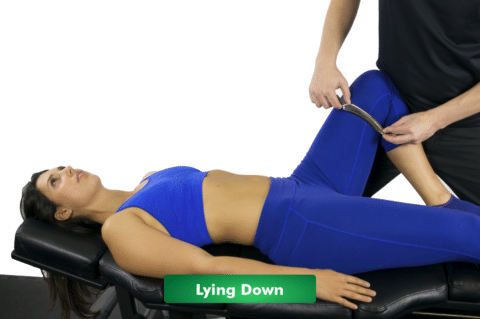
Before starting IASTM treatment, consider the most efficient and effective position for the client to be in. The client is placed in prone, supine or side lying. Most commonly this will be on a practitioners treatment bench. However, if working on athletes out in the field the IASTM practitioner will need to improvise with what the surroundings they have.
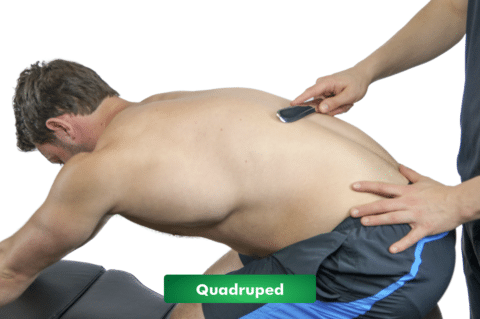
To apply IASTM in this position the client is placed on all fours. On a day to day clinic surrounding this would be easily applied on a practitioners treatment bench. However, if this is not available any matting or flooring will work.
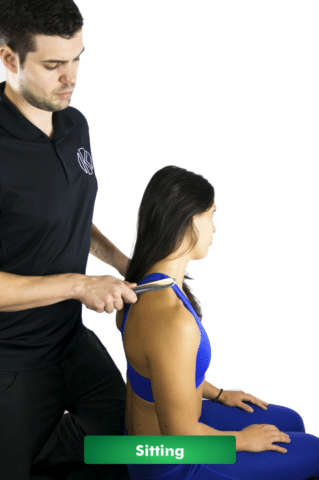
Before starting IASTM, the client is placed in a sitting, half kneeling or tall kneeling position. In a clinic sitting is easiest on the practitioners treatment table. For half and tall kneeling make sure the knees are protected from floors that may cause damage or irritation.
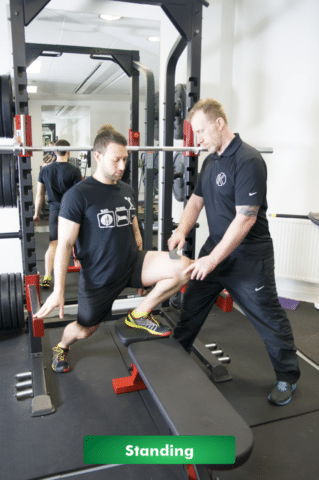
To apply IASTM the patient is usually placed in a standing position. However this also covers functional fully weight bearing positions such as squat or lunge.
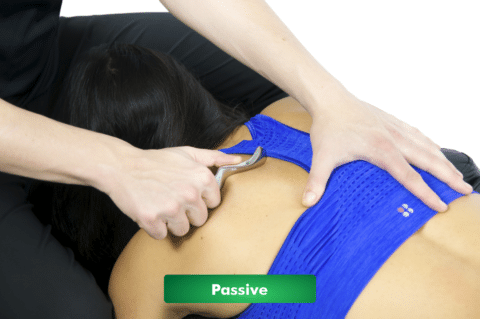
Once in position, the client stays as passive as possible whilst IASTM treatment techniques are applied. This may mean no movement of the clients at all or that the practitioners moves the clients body or limb.
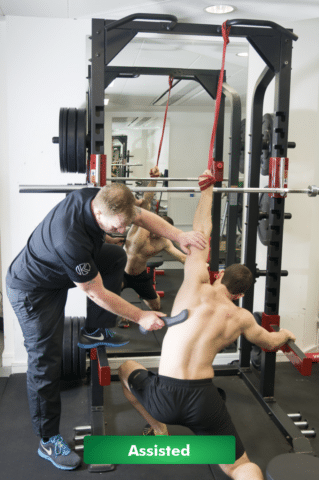
Once in position, the client is assisted in moving a limb, joint or structure through a range of motion with IASTM treatment techniques being applied. The assistance can come from anything from the practitioners hands or body assisting the movement to therabands, red cord, rope or a towel. Anything that will add a little bit of help to the client to perform the full and correct movement.
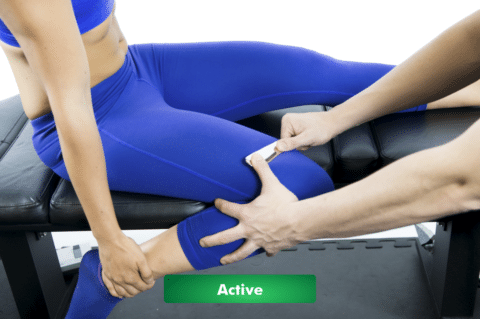
Once in position, the client actively moves a limb, joint or structure through a range of motion whilst IASTM treatment techniques are applied.
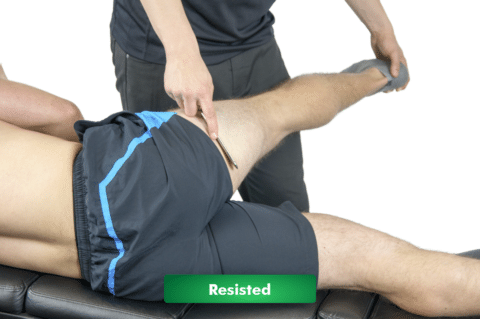
Once in position, the client actively moves against resistance. IASTM treatment techniques are applied during this process.
Clinical Application of the IASTM & The 4×4 Treatment Matrix
You may already know of and use the original SFMA 4×4 stability matrix, in which case adding the 4×4 treatment matrix to your IASTM will be easy. If you don’t this isn’t a problem. When you have gained the confidence, here are few real case study examples of why you may want to experiment with adding the 4×4 treatment matrix alongside your IASTM skills.
Example 1

A professional wakeboarder presented to the practice complaining of continuous, localised hip pain that occurred after a particularly bad “wipe out” during a practice session. After a short and effective treatment programme the wakeboarder reported a 95% improvement in symptoms. There are no symptoms for the majority of their day, aside from when they were wake boarding. A further physical therapy session applied on the treatment table, as is traditional for most practitioners, made no difference to resolving the last 5%. The practitioner then got the patient to reproduce their position during wake boarding, provoking the symptoms and treating them in that position. It took treating the issue in a 4×4 position, which reproduced the mechanical and neurological load that caused the symptoms, to finally resolve the problem.
Example 2

A high powered executive presents with localised neck pain and right sided arm symptoms that occurred after many hours of sitting at their desk working on an important presentation. After a short and effective treatment programme the executive reported a 100% improvement in arms symptoms and a 90% improvement in the neck pain. There were no symptoms for the majority of the executives day, aside from when they were sat at a desk working on their computer. Further physical therapy sessions applied on the treatment table, as is traditional for most practitioners, made no difference to resolving the last 10% of the neck pain. The practitioner then got the patient to reproduce their position at a desk that provoked the symptoms and treated them in that position. It took treating the issue in a 3×3 position, which reproduced the mechanical and neurological load that caused the symptoms, to finally resolve the problem.
Example 3
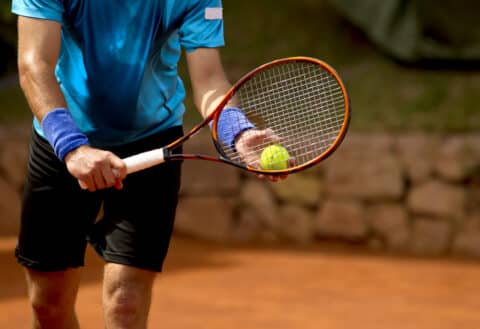
A amateur right handed tennis player presents with localised right elbow pain that occurred after playing an excessive amount of games on one weekend. After a short and effective treatment programme the tennis player reports a 90% improvement in the elbow symptoms. There are no symptoms present until the player grips the tennis racket and further aggravation occurs during wrist extension through a backhanded shot. Further physical therapy sessions applied on the treatment table, with the patient relaxed, made no difference to resolving the last 10% of the elbow symptoms. The practitioner then got the client to bring in their tennis racket and reproduce the position that provoked the symptoms and treated them in that position. It took treating the issue in a 4×3 position with the tennis racket in hand, which reproduced the mechanical and neurological load that caused the symptoms, to finally resolve the problem.
As we stated at the beginning, the 4×4 treatment matrix is a great addition to any manual therapy including Graston, IASTM, active release or other massage based techniques. These examples are but a few of many cases that illustrate the positive impact of using the 4×4 matrix within a clinic environment. To be in that top 1% of clinicians, to be able to resolve those stubborn cases that flummox others, one needs to think “outside the box” that defines most practitioners and deploy skills like the 4×4 treatment matrix.
IASTM : Want To Know More?
Looking for an extensive online course to take your knowledge to the next level? Then check out our IAT® Neurology seminar video and information page here.
Want to know the downfall of most IASTM courses and why we think you should look for better solutions? Then check out our page on IASTM Certifications here.
Looking for the best IASTM Techniques? Then check out our video on the diagnostic concept here.
Want to know why materials and manufacturing are two of the most important points to consider when buying any IASTM tool? Then the videos and information on our IASTM Tools information page is perfect for you.

